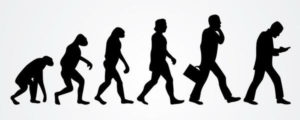This is a follow-up from “A Dark Horse? Three Philosophical Enquiries About The Unusual” blog post, putting into the practice the technique of defining something by the kind of thing it is (genus) and what makes it different to other things of that kind.
Working at Wayland Junior Academy Watton in Norfolk yesterday [Ed – a typical Philosophy Man day – whole school assembly, six demo classes, 1½ hour twilight INSET, tons of resources, yours for £1000 + VAT, roll-up, roll-up!], the class topic for year 5 was the classification of living things, inviting this enquiry on, “What is a human being?”.

Physical Set Up
Life and the school day are too short to spend time clearing furniture to get people in a circle. I prefer to stand in the middle of the room, and say, “Take your chair, find a wall, and face me, so we can all see each other.” Less faff and talking over tables is less exposing than that big empty space.
Warm-Up Game “This is Not a Spoon”
Pass a spoon to a participant, with the words, “This is not a spoon. It is an extendable nose,” or whatever else you wish it to be. They then pass it on saying, “This is not an extendable nose, it is a…” and transform the spoon into something else. Before they have even spoken, get another spoon started somewhere else in the circle, so that you have four to six spoons circulating and nobody is the centre of everybody’s attention (again, reducing exposure).
What is a Chair?
Explain that one way of defining something is to say what type of thing it is and then what makes it different. For example, “A spoon is a piece of cutlery with a bowl for scooping up liquid.” (Helps to have a knife and fork handy to visually reinforce the class of objects to which a spoon belongs).
Put a chair on a table. “This is a chair. But how could I define what a chair is for someone who had never seen a chair? What you want is a definition that includes all chairs, but doesn’t include anything that is not a chair.”
Get them thinking in pairs, hear definitions, gather counterexamples to them, and refine until there is a satisfactory definition. Dictionaries are banned!
What is a Human?
Now proceed to the main course of the discussion. What type of thing is a human, and what is the most important difference from other things of that type? For type, we had animal, mammal or monkey, and we had tool-making, wearing clothes, speaking, the ability to learn, burying our dead as the signal differences in one class, alongside physical differences such as hairlessness, bipedalism and tailless-ness. You can further the discussion by considering why some of these differences might be more important than others.
As an aside you can share with the group, Aristotle defined man as “the rational animal”. As a philosopher, he would, wouldn’t he? But someone with a different perspective might define us as the animal that has the longest childhood. Homo infans? An interesting extension task might be to look at the Latin names of the precursors to homo sapiens, which will match some of the ideas raised, and to work out new Latin names corresponding to the other positions taken in the discussion.
For the strict biological tree of life, if you haven’t already seen this beguiling website, in which you can see how closely related you are to wolf’s milk slime and a myriad of other organisms, go to OneZoom.org
Working on definitions and refining them via counterexamples that the definition fails to cover or that extend the definition too widely is great practice in precise thinking.
Best wishes,
Jason